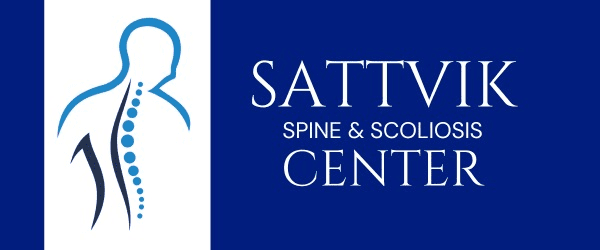If you’re experiencing spine problems, your healthcare provider may recommend a series of tests to help diagnose your condition. These tests may include physical exams, imaging studies, and diagnostic tests, among others. In this article, we’ll discuss the different tests used in spine problem evaluation, their purpose, and how they’re performed. By the end of this article, you’ll have a better understanding of what to expect during the diagnostic process for spine problems.
The spine is a complex structure that plays an essential role in the body, serving as a structural support for the body, protecting the spinal cord, and allowing for movement and flexibility. However, the spine is also prone to various problems that can cause pain, discomfort, and even disability. Proper evaluation and diagnosis of spine problems are critical for effective treatment.
Physical Examination
The first step in evaluating spine problems is a physical examination by a qualified healthcare professional. During this examination, the healthcare provider will take a detailed medical history, asking about any prior injuries, underlying medical conditions, and family history. They will also perform a thorough physical examination, checking for signs of pain, swelling, inflammation, or deformity. The healthcare provider will evaluate the patient’s range of motion, reflexes, and strength to identify any neurological deficits.
Imaging Studies
Imaging studies are essential for evaluating spine problems. They provide a detailed view of the spine and help to identify the location and severity of the problem. The most common imaging studies used for evaluating spine problems include X-rays, CT scans, and MRI scans.
X-rays: X-rays are useful for evaluating bone structures and can identify fractures, dislocations, or degenerative changes in the spine. They are quick and cost-effective and can be used to identify structural abnormalities, such as spinal curvature or alignment problems.
CT scans: CT scans provide detailed images of the spine and can detect abnormalities that may not be visible on X-rays. They are useful for evaluating the bone and soft tissues in the spine, such as the discs and nerves.
MRI scans: MRI scans use powerful magnets and radio waves to create detailed images of the soft tissues, such as the discs and nerves, in the spine. They are useful for identifying herniated discs, spinal stenosis, or nerve compression. MRI scans are particularly useful for diagnosing complex spine problems, such as tumors or infections.
Electromyography (EMG)
Electromyography (EMG) is a test that evaluates the electrical activity of muscles and nerves. It is useful for identifying nerve damage or muscle weakness that may be causing spine problems. During the test, the healthcare provider inserts a needle electrode into the muscle, which records the electrical activity of the muscle at rest and during contraction. The results of the EMG test can help to diagnose conditions such as pinched nerves, peripheral neuropathy, or myopathy.
Bone Scans
Bone scans are useful for identifying conditions such as infections, tumors, or fractures that may not be visible on X-rays or CT scans. They involve injecting a small amount of radioactive material into the bloodstream, which is then absorbed by the bones. The bones are then imaged to detect areas of increased activity, which may indicate bone abnormalities. Bone scans are particularly useful for diagnosing conditions such as osteoporosis or spinal infections.
Discography
Discography is a diagnostic test that involves injecting a contrast dye into the spinal disc and imaging it under X-ray or CT scan. It is useful for identifying the source of pain in the spine and can aid in treatment planning. Discography is typically used for patients who have persistent back pain despite other treatments, and the results of the test can help to determine if a spinal fusion or other surgical intervention is necessary.
Ultrasound
Ultrasound is a non-invasive imaging test that uses sound waves to create images of the inside of the body. It is commonly used to evaluate soft tissue structures, such as muscles, tendons, and ligaments, as well as organs like the liver, kidneys, and uterus. During an ultrasound exam, a small device called a transducer is placed on the skin over the area being evaluated. The transducer emits high-frequency sound waves, which bounce off internal structures and create echoes. These echoes are then converted into images that can be seen on a monitor. It is particularly useful for diagnosing conditions
Blood Tests
Blood tests can be useful for identifying underlying medical conditions that may be causing spine problems. They can also help to detect infections or inflammatory conditions. The most common blood tests used for evaluating spine problems include:
- Complete Blood Count (CBC): This test evaluates the number and types of blood cells in the body. An abnormal CBC may indicate an infection, inflammation, or underlying medical condition.
- Erythrocyte Sedimentation Rate (ESR): This test measures the rate at which red blood cells settle in a test tube. An elevated ESR may indicate an underlying inflammatory condition.
- C-reactive protein (CRP): This test measures the level of a protein produced by the liver in response to inflammation. An elevated CRP may indicate an underlying infection or inflammatory condition.
Biopsy
A biopsy is a diagnostic test that involves removing a small sample of tissue from the spine for examination under a microscope. Biopsies are useful for identifying cancer, infections, or other abnormal tissue growths. Biopsies can be performed using a needle, or during a surgical procedure.
Provocative Tests
Provocative tests are used to evaluate spine problems by reproducing the patient’s symptoms. These tests involve placing stress on the spine in various ways to identify the location and severity of the problem. The most common provocative tests used for evaluating spine problems include:
- Straight Leg Raise Test: This test involves lifting the patient’s leg while keeping the knee straight. It is used to evaluate for nerve root compression or sciatica.
- Spurling Test: This test involves tilting the head to one side while applying downward pressure to the top of the head. It is used to evaluate for nerve root compression in the cervical spine.
- Lasegue Test: This test involves raising the patient’s leg while the knee is bent. It is used to evaluate for nerve root compression or sciatica.
Functional Tests
Functional tests evaluate the patient’s ability to perform everyday activities and assess the impact of spine problems on their quality of life. These tests can be useful for determining the severity of the problem and identifying areas for treatment. The most common functional tests used for evaluating spine problems include:
- Oswestry Disability Index: This test evaluates the patient’s ability to perform various activities of daily living and assesses the impact of spine problems on their quality of life.
- Roland-Morris Disability Questionnaire: This test evaluates the patient’s ability to perform various activities of daily living and assesses the impact of spine problems on their quality of life.
In conclusion, evaluating a spine problem requires a comprehensive approach involving a thorough medical history, physical examination, imaging studies, and other diagnostic tests. These tests may vary depending on the suspected diagnosis and severity of the condition. Therefore, it is important to seek medical attention promptly if you experience any signs or symptoms of a spine problem, such as back pain, neck pain, numbness, or weakness in your extremities.
It is also important to choose a qualified and experienced spine specialist to ensure an accurate diagnosis and appropriate treatment plan. By working closely with your healthcare team and following their recommendations, you can help manage your spine problem and maintain your overall health and well-being.
Remember, early detection and treatment of a spine problem can make a significant difference in your quality of life, so don’t hesitate to seek medical attention if you have any concerns.











Get Social